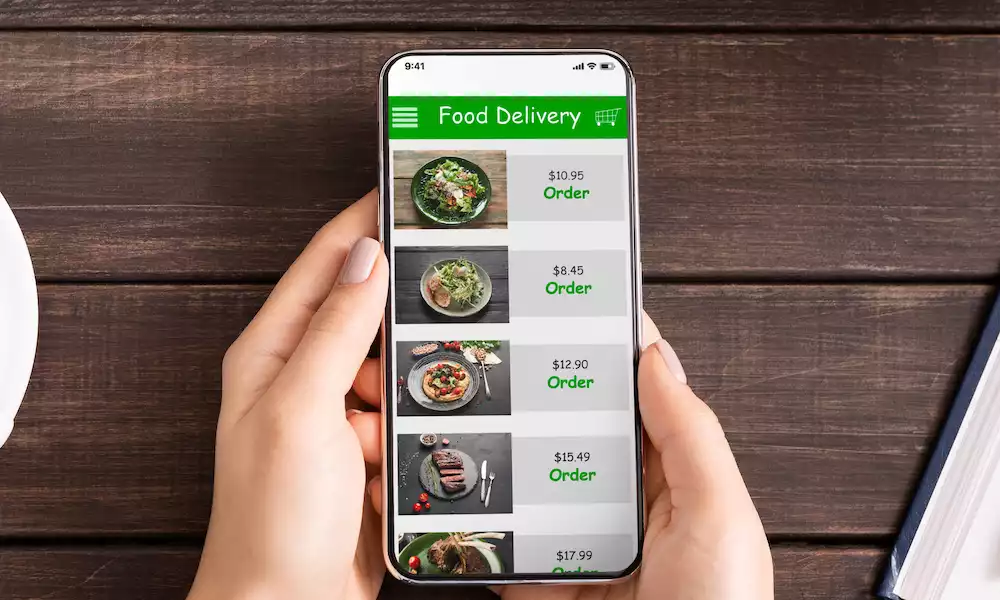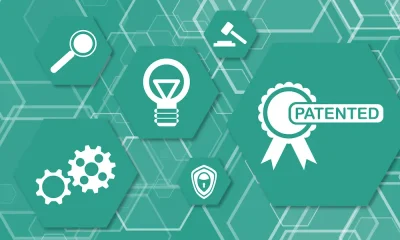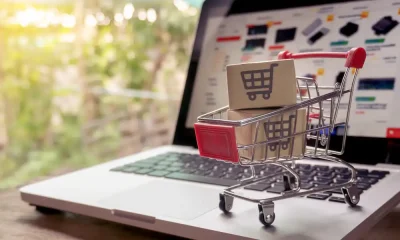Management
The Evolution of Food Distribution: Web 2.0 to Web 3.0

How has food distribution changed since Web 2.0, and what does the future look like with Web 3.0?
First, let’s look at what is meant by Web 2.0. “Web 2.0” refers to transitioning from the early, static internet to a more dynamic, interactive online environment.
If you’re a Gen X or older, you’ll remember the beginnings of the WWW and internet access via a dial-up connection. That period was the 1990s – 2000s, with minimal user interaction or dynamic content. It was the time of slow Internet speeds.
Web 2.0 And Food Distribution
Web 2.0 brought about a lot of change in how people communicate, collaborate, and share information on the web.
While Web 2.0 doesn’t directly impact food distributors, the broader technological advancements and shifts in consumer behavior facilitated by Web 2.0 have influenced various aspects of the food industry and its distribution.
Online shopping has been the most prevalent change in food distribution since the advent of Web 2.0.
1. E-commerce and Online Grocery Shopping
Web 2.0 has played a significant role in the rise of e-commerce, enabling consumers to order groceries online. This shift has led to the growth of online grocery shopping platforms, allowing customers to browse, select, and purchase food items from the comfort of their homes.
The convenience of ordering your weekly food shopping online has been transformational. There is much more competition in the online food shopping market, so consumers can search for cheaper options.
Also, more types of food online shopping have appeared since Web 2.0. For example, the fast food delivery service is used by nearly a third of all Americans, that’s over 100 million people, ordering a meal online and being delivered to their door.
2. Food Delivery Services
The emergence of Web 2.0 has coincided with the rise of food delivery services.
Did you know that nearly a third of Americans use fast food delivery services? That’s over 100 million people ordering a meal online and having it delivered to their door.
Platforms like Uber Eats, DoorDash, and Grubhub leverage the internet and mobile technologies to connect consumers with various restaurants and food options, providing convenient food delivery services.
3. Social Media and Food Trends
Web 2.0 has given rise to social media platforms where people share their food experiences, recipes, and recommendations. This has significantly impacted food trends, influencing people’s eating and trying.
Restaurants and food brands often leverage social media to market their products and engage with customers. Influencers have been in hot demand for selling new food and drinks on social media, including short TikTok, Instagram, and YouTube clips.
4. Data Analytics and Supply Chain Optimization
The use of data analytics in the food industry has been enhanced by Web 2.0 technologies.
Companies can leverage data to optimize their supply chains, track inventory, and improve overall efficiency in food distribution. This has led to better forecasting and management of food supplies.
However, with changes to how data can be collected, i.e., without third-party data, companies in the food industry have needed to evolve how they use consumer data.
5. Direct-to-Consumer Models
Web 2.0 technologies have enabled food producers to reach consumers more directly. Farmers and small-scale producers can use online platforms to sell their products directly to consumers, bypassing traditional distribution channels.
6. Crowdsourced Reviews and Ratings
Web 2.0 has facilitated sharing of user-generated content, including reviews and ratings for restaurants and food products. Consumers can now make more informed decisions based on the experiences of others, contributing to a more transparent and competitive food industry.
7. Mobile Apps for Food Management
With the proliferation of smartphones, various mobile apps have emerged to help consumers manage their food preferences, track nutritional information, and reduce food waste. These apps leverage Web 2.0 technologies to provide personalized experiences.
While Web 2.0 may not have directly transformed food distribution, its technological and cultural shifts have significantly influenced how food is marketed, sold, and consumed. Integrating online platforms, e-commerce, social media, and data analytics has reshaped the food industry’s landscape.
Food Containers and Smart Packaging
The demand for online food shopping and delivery has given rise to an industry using advanced technology to create containers that can keep food hot or cold as required.
Containers for delivering food have evolved to better maintain the temperature of the food, whether it needs to be kept hot or chilled. These advancements are crucial for ensuring that delivered meals arrive in the best possible condition.
Container Materials
Containers now use advanced insulation materials that help retain heat or cold for extended periods. These materials are often lightweight yet highly effective in maintaining the desired temperature.
Many modern containers are constructed with multiple layers of materials, each serving a specific purpose. For instance, a container may have an inner layer that helps keep heat in or cold out, while an outer layer may provide additional protection and insulation.
Containers designed for hot food often incorporate technology to retain heat. This can include materials that trap and reflect heat back into the container and features like double-walled construction.
Similarly, containers for chilled or frozen food may include cooling elements. These can range from gel or ice packs built into the container to more advanced technologies, such as phase-change materials that absorb and release heat to maintain a consistent temperature.
Some containers incorporate ventilation systems that allow steam to escape gradually, preventing the buildup of moisture that could affect the quality of the food.
Smart Packaging
Technological advances have led to the development of “smart” packaging that can actively monitor and control the temperature of the contents. This may include sensors that adjust the insulation based on external conditions or the ability to connect with a temperature control system during transit.
Containers are now designed with specific types of food in mind. For example, a container for pizza may have a different design than one for salads. This customization helps optimize the temperature control for different types of cuisine.
With increasing emphasis on sustainability, there’s a trend towards using eco-friendly and sustainable materials in food delivery containers. These materials often have insulating properties that help in temperature maintenance.
Additionally, improved sealing mechanisms help prevent heat or cold from escaping, ensuring that the desired temperature is maintained throughout delivery.
The Future With Web 3.0
How will Web 3.0 change food distribution? Web 3.0 is all about decentralization, and some of the potential changes in food distribution will include:
- Blockchain to enhance transparency and traceability in the food supply chain
- Smart contracts for payment processing, order fulfillment, and compliance
- Decentralized marketplaces where producers, distributors, and consumers interact directly, cutting out the intermediaries
- Food distribution efficiencies achieved with AI and predictive analytics
- Consumers have more control over their data and who has it
Not so fast
It’s important to note that successfully implementing these changes would require widespread adoption of Web 3.0 technologies, addressing regulatory challenges, and building trust among stakeholders in the food industry.
Additionally, these changes’ social and economic implications would need to be carefully considered to ensure a fair and equitable food distribution system.
If you’re older than Gen X, widespread support and take-up may not happen in your lifetime. Younger generations, however, have a bright and exciting future with Web 3.0 and how it will enhance food supply and services.
Summing Up
The food distribution industry has evolved with Web 2.0 and it will continue to do so as we moved to Web 3.0.
There is a lot to be thankful for with Web 2.0 including, more food supply and delivery options, high tech distribution containers creating yet another market and with more competition comes lower costs.
Additionally, businesses have been kept honest with the rise of social media, influencers and online reviews.









